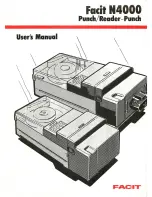
ķ
10
Selecting the RADIO programme source
In cassette or CD mode:
Repeatedly press the
“
SO
APF
URCE/
button until the
display indicates "
RADIO
".
Range selection
VHF range
Briefly press the
“
U III
LEARN
stepping button:
U I, U II or U III.
AM range
Briefly press the
¡
AM AS
stepping button:
the display indicates "
MW
" for Mediumwave
and "
lW
" for Longwave.
After selecting the desired range, you will hear
the station last tuned to in this range
(Last-station-memory).
Stereo reception (only with VHF)
You are receiving a stereo broadcast if the
display indicates "
ɳ
".
Manual switching to
mono
:
If reception conditions are poor, for example
in the mountains, the sound quality can be
improved by switching manually to mono
reception.
Briefly press the
¡
MONO/
ij
button.
The display indicates "
MONO
".
To switch back to stereo:
briefly press the
¡
MONO/
ij
button.
Setting RDS programmes with the
LEARN memory
With the push of a button
you can store up to 25 RDS programmes in
the LEARN memory!
You can call up the stored RDS programmes
one after the other.
Using the LEARN memory is of advantage if
you are in an unknown reception area and do
not wish to clear the stored stations.
Allocating the LEARN memory
Ranges: U I, U II or U III.
Press the
“
U III
LEARN
button until the signal
sounds:
"
LRN ...
" appears in the display and the radio
scans the VHF range.
RDS programmes (max. 25) being received in
the reception area are stored in memory.
After storing you will hear the RDS program-
me having the best reception quality.
If "
TP
" is selected, you will only hear RDS
programmes broadcasting traffic announce-
ments.
Radio
“
SO
APF
URCE/
“
1
–
“
6
“
PTY
DX
¡
MONO/
ij
¡
AM AS
¡
TP/AF
“
U III
LEARN












































